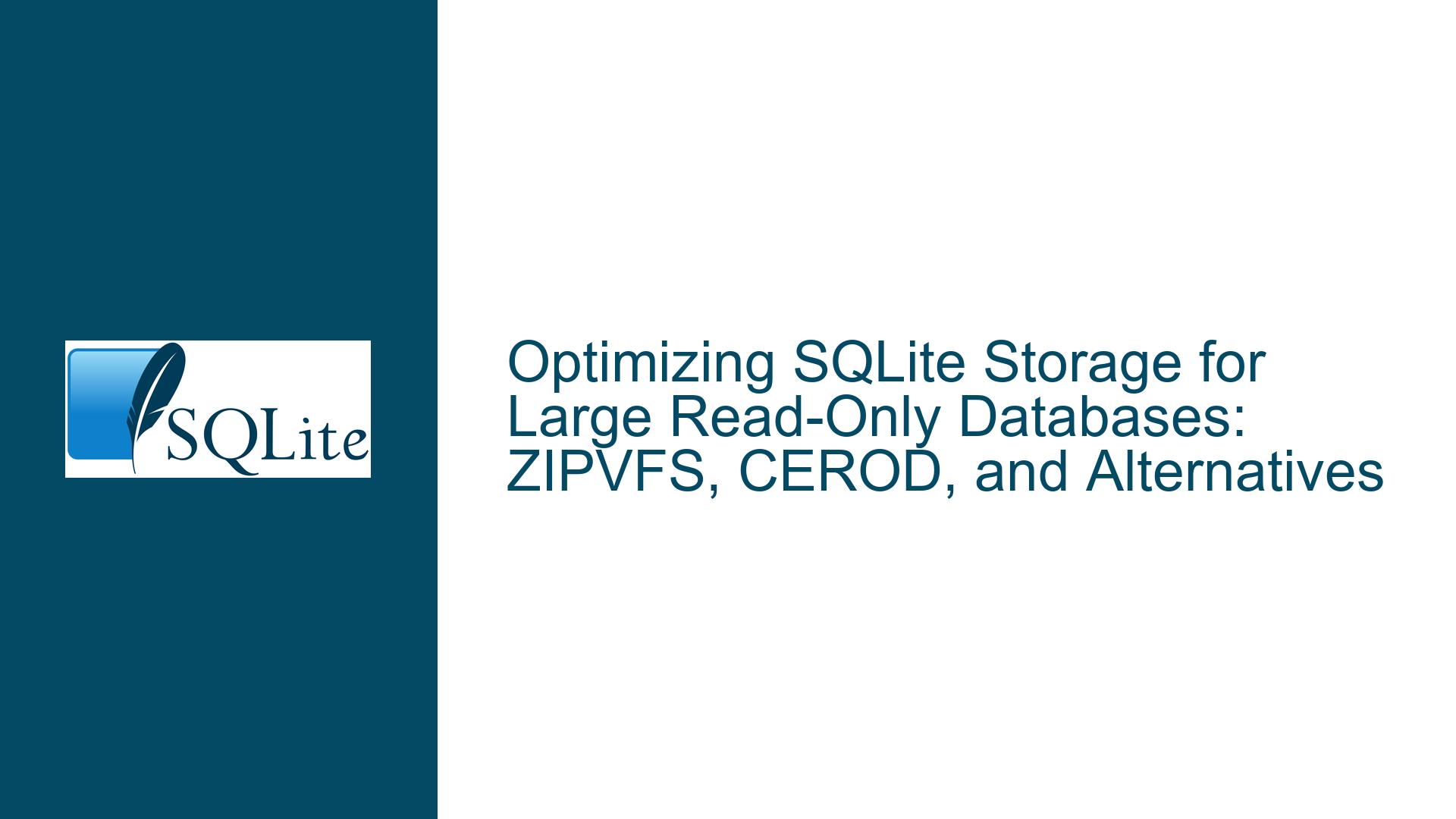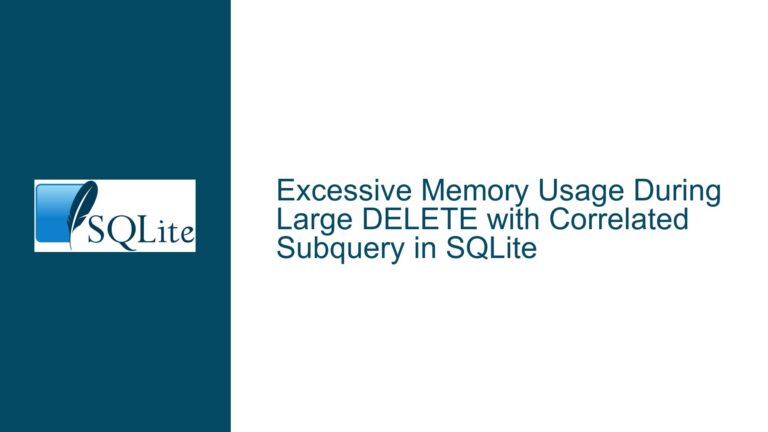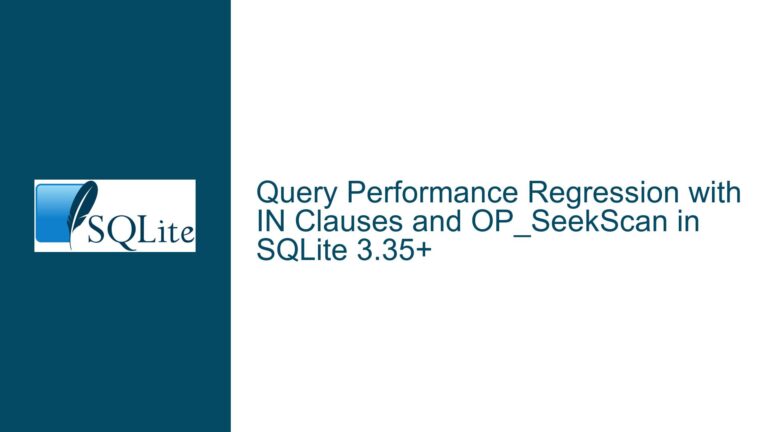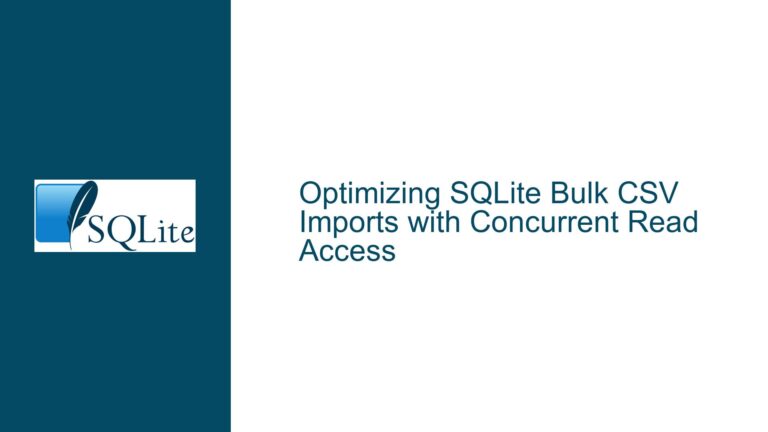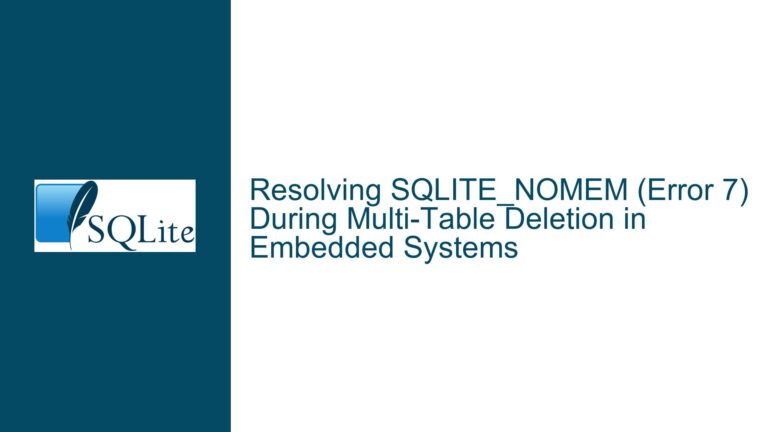Optimizing SQLite Storage for Large Read-Only Databases: ZIPVFS, CEROD, and Alternatives
Understanding the Storage and Compression Needs for Large Read-Only SQLite Databases
When dealing with large read-only SQLite databases, the primary challenge is managing storage requirements without compromising query performance. The use case involves storing indexed representations of raw data, sharded across multiple SQLite files to keep individual file sizes manageable. However, the total projected disk capacity needed is exceeding the available storage budget. This scenario necessitates exploring compression techniques to reduce the storage footprint while maintaining efficient query execution.
One of the primary considerations is the choice of compression method. The discussion highlights several options, including ZIPVFS, CEROD, and other alternatives like sqlite_zstd_vfs. Each of these methods has its own set of trade-offs, particularly in terms of compression ratio, query performance, and ease of integration with existing systems. Additionally, the read-only nature of the databases opens up possibilities for post-processing compression techniques, which can offer better compression ratios but may require additional disk space during the compression process.
The choice of compression method also depends on the specific requirements of the project, such as the size of the databases, the available RAM, and the need for flexibility in choosing compression algorithms. For instance, ZIPVFS offers the advantage of pluggable compression algorithms, allowing for experimentation with different methods to find the optimal balance between compression ratio and query performance. On the other hand, CEROD, while less documented, might offer better performance for certain types of data.
Evaluating the Impact of Compression on Query Performance and Storage Budget
The impact of compression on query performance is a critical factor to consider. While compression can significantly reduce storage requirements, it can also introduce overhead during query execution, particularly if the data needs to be decompressed on-the-fly. This overhead can vary depending on the compression algorithm used, the size of the data, and the complexity of the queries.
For example, ZIPVFS, which allows for on-the-fly compression and decompression, might introduce some latency during query execution, especially for large datasets. However, the ability to experiment with different compression algorithms can help mitigate this issue by finding the algorithm that offers the best trade-off between compression ratio and query performance. On the other hand, CEROD, which performs compression as a post-processing step, might offer better query performance since the data is already compressed and optimized for read operations. However, this approach requires additional disk space during the compression process, which might be a concern if the storage budget is already tight.
Another consideration is the impact of compression on RAM usage. While compression reduces disk space requirements, it can increase RAM usage, particularly if the data needs to be decompressed in memory for query execution. This is especially relevant for large datasets, where the amount of RAM required to decompress the data might exceed the available memory, leading to performance degradation or even system crashes. Therefore, it is essential to evaluate the RAM budget in conjunction with the storage budget when choosing a compression method.
Exploring Integration and Licensing Considerations for Compression Solutions
Integration and licensing considerations are also important factors when choosing a compression solution for SQLite databases. The discussion highlights the need to statically link ZIPVFS into the application, which might be a challenge for Java-based systems that rely on dynamic libraries. This limitation might necessitate exploring alternative solutions that can be more easily integrated with the existing system architecture.
For instance, sqlite_zstd_vfs offers an Apache-licensed alternative that can be loaded as a dynamic library, making it more suitable for Java-based systems. However, this solution has its own set of trade-offs, including potential performance limitations and the need for background threads to handle compression and decompression. Therefore, it is essential to evaluate the integration requirements and licensing constraints when choosing a compression solution.
Additionally, the discussion touches on the need for commercial support and communication channels for products like ZIPVFS and CEROD. While the SQLite forum provides a platform for technical discussions, it might not be the appropriate place for detailed commercial negotiations, particularly when sensitive information needs to be shared. Therefore, it is important to establish clear communication channels with the vendors to discuss licensing, support, and other commercial considerations.
Troubleshooting Steps, Solutions & Fixes for Implementing Compression in SQLite Databases
When implementing compression in SQLite databases, it is essential to follow a systematic approach to ensure optimal performance and storage efficiency. The first step is to evaluate the specific requirements of the project, including the size of the databases, the available storage and RAM budgets, and the need for flexibility in choosing compression algorithms. This evaluation will help narrow down the list of potential compression solutions and identify the most suitable options.
Once the potential solutions have been identified, the next step is to conduct a thorough performance evaluation. This evaluation should include benchmarking the compression ratio, query performance, and RAM usage for each solution under consideration. The benchmarking process should be conducted using realistic datasets and queries that reflect the actual usage patterns of the system. This will help ensure that the chosen solution offers the best trade-off between compression ratio and query performance.
After selecting a compression solution, the next step is to integrate it into the existing system architecture. This integration process should be carefully planned and executed to minimize disruptions and ensure compatibility with the existing codebase. For Java-based systems, this might involve using dynamic libraries or other integration techniques to ensure that the compression solution can be easily loaded and used by the application.
Finally, it is important to monitor the performance of the compressed databases over time and make adjustments as needed. This monitoring process should include regular performance evaluations, as well as ongoing optimization efforts to ensure that the compression solution continues to meet the evolving needs of the system. By following these steps, it is possible to implement compression in SQLite databases in a way that maximizes storage efficiency and query performance while minimizing the impact on system resources.
In conclusion, optimizing storage for large read-only SQLite databases requires a careful evaluation of compression techniques, performance trade-offs, and integration considerations. By following a systematic approach and considering the specific requirements of the project, it is possible to implement a compression solution that meets the storage budget while maintaining efficient query performance.
